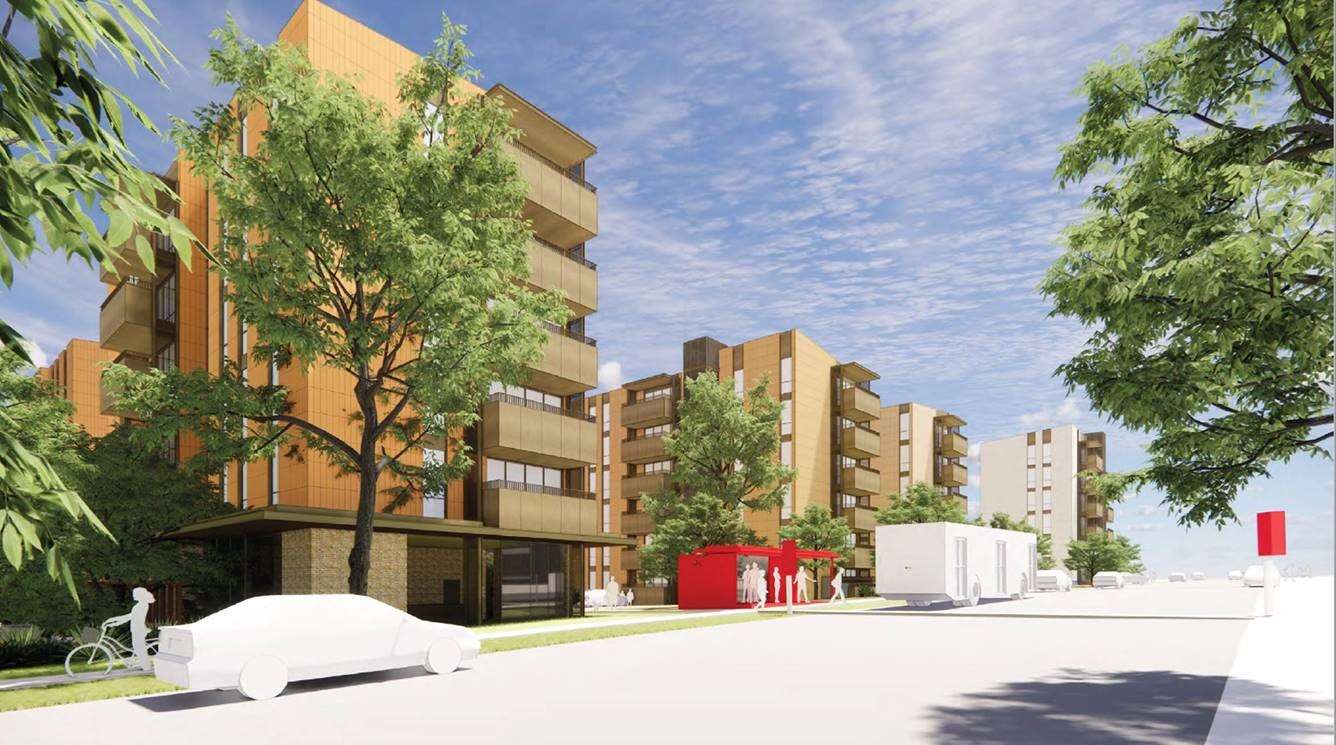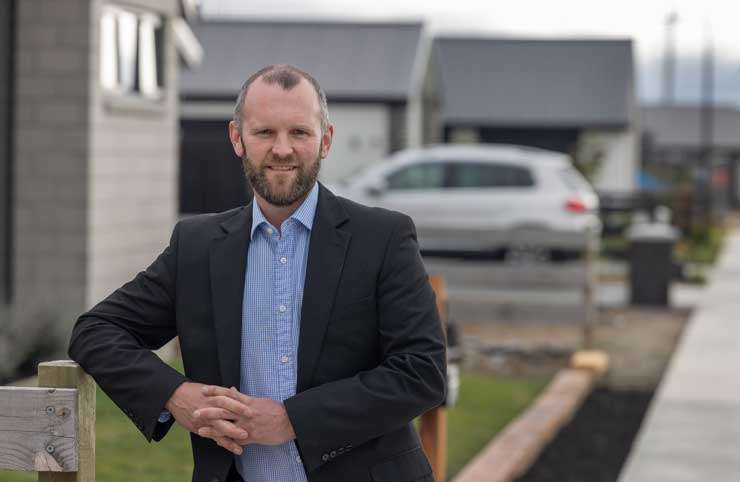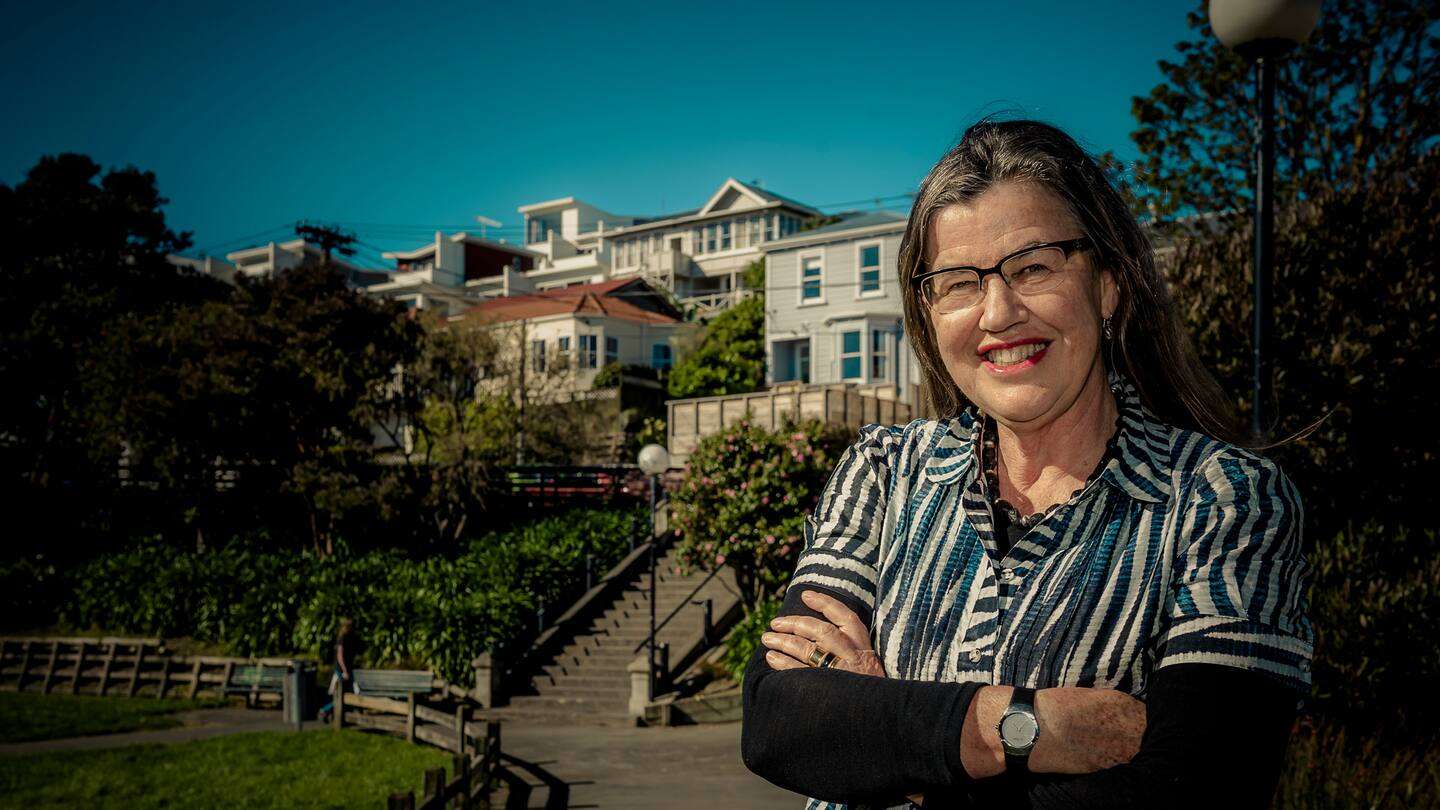The future of 21 large-scale social housing developments aimed at solving the country’s housing crisis hangs in the balance and could be canned.
They are among the 2168 consented, but uncontracted, social houses due to be completed after June 2025 that are now being reviewed. Kāinga Ora said some would go ahead, but if they weren’t found to be financially viable or in a priority location they could be redesigned, repurposed or the sites sold off.
The full list of Kāinga Ora’s large social housing projects, which have 30 or more houses planned in a single development, that are on hold was released to OneRoof last week under the Official Information Act. The 21 projects in Auckland, Wellington, Palmerston North, Hamilton and Napier would have provided an additional 1576 more affordable homes.
They were put on hold in May after a damning review into Kāinga Ora that found the country’s biggest landlord was underperforming, not financially viable and the governance from the board lacking. Housing Minister Chris Bishop then confirmed Kāinga Ora would not be given any more operating funding to grow its social housing portfolio, but allocated $140 million towards funding 1500 new social housing places to be provided by Community Housing Providers (CHPs).
Start your property search
Discover more:
- Revealed: The Kiwi homes earning more than a top CEO's pay
- First-home buyers pounce on Remuera's best bargain - house sells for less than $1m
- Historic manor saved from ruin and rats for sale for just over $1m
The largest Kāinga Ora development with a big question mark around it is the planned social housing development with 301 houses in the former Arlington Apartments site in Mount Cook, Wellington, which was first announced in 2022 and promised to solve the capital city’s housing crises by providing new homes for about 900 people at a cost of $296m.
The next largest is a social housing complex on Jordan Ave and Mt Smart Road, in Onehunga, Auckland, which had a mix of 186 terraced houses and apartments and is the biggest of the 12 big state housing projects also on hold in the city. The 62 old state houses previously on the site have already been bowled to make way for the new development.
Three developments in Palmerston North totalling 160 houses, two in Hamilton totalling 107 dwellings, one 30-dwelling development in Napier and another 80-dwelling development in Wellington, have also been halted. Out of the 21 projects, the 60-house development site on Endeavour Avenue, in Hamilton, which had received backlash from the community, was the only one where a third of the homes had been earmarked as private housing.

The social housing block in Onehunga with a planned 186 terraced houses and apartments, illustrated above, is the largest development in Auckland to have been placed on hold. Image / Kāinga Ora
Kāinga Ora’s Homes and Communities general manager of strategy, finance and policy Gareth Stiven said the contracting of further Kāinga Ora social housing projects was currently under assessment, but some would still go ahead.
Kāinga Ora was working with the Ministry of Housing and Urban Development on locations they wanted prioritised under the Public Housing Plan and its new approach to housing renewal, he said.
Stiven said the assessment process was complex, especially for larger or more significant developments, and some would be given the go-ahead on a weekly basis. Projects that were scrapped would go back to the design stage and alternative options for the site would be explored, he said.
“Depending on the site and the need, these alternative options can include (but are not limited to) renovating the existing property, working with private developers to enable an appropriate mix of housing or selling the site. For some projects we may need to wait for future budget decisions.”
Since June 2023, Kāinga Ora has completed 4864 new state houses and an extra 3640 were under construction and on track to be delivered.

CoreLogic chief property economist Kelvin Davidson says houses will still be built even if it isn't by Kāinga Ora. Photo / Peter Meecham
CoreLogic chief property economist Kelvin Davidson said while social housing played an important role, it was only a small part of the overall housing market.
“Just because Kāinga Ora puts a freeze on its housing programme doesn’t mean houses won’t be built, they might just be built by the private sector or other people.
“It could just be that they are funded in different ways.
“Those resources that were going to be put toward building state houses could be put towards other houses. The builder will still be looking for work so they might just build other properties.”
Davidson said there wasn’t a shortage of private rental properties at the moment and the rents were tailing off so people who might have been destined for a state house might be able to find other options.
But University of Otago professor Philippa Howden-Chapman, who is based in Wellington and specialises in housing and health, strongly disagreed and said it was both “tragic” and “sad” that some of these projects would not go ahead.
“I think it’s extremely problematic to build up a system that is working extremely well and then say ‘oh actually we are not going to provide you with the capital’.”
She said the Community Housing Providers (CHPs) and other providers, which the National Government had signalled it wanted to work with, were much smaller enterprises so while they might build some new homes, it was unlikely to be on the same scale.
However, she hoped some agreement would be made as a lot of work such as purchasing the land and putting in services at developments such as the planned Arlington Apartments, in Mount Cook, had already been done.
“It’s crazy to just leave them all open and empty.
“It makes the whole area look totally neglected. They talk about the broken window syndrome in big Northern European and American cities, but we can say that the empty building sites in NZ are a bad sign too.”
And while Davidson argued private developers would continue to build homes, Howden-Chapman said these were usually unsuitable and aimed at the top end of the market.

Otago University professor Philippa Howden-Chapman said it was sad that the large social housing developments might not go ahead. Photo / Supplied
The private rents might also be unaffordable for those needing state homes, she said, because government housing was based on income-related rents and could be no more than 25% of the household income thus it was usually lower. Warm, affordable homes because warm homes also supported better health outcomes, she said.
Victoria University of Wellington professor of public policy Jonathan Boston said New Zealand needed more investment in social housing and not less.
“My personal view is we should seek to double our public housing stock from around 70,000 units to around 150,000 / 160,000 units which would take us back to where we were 40 years ago when the social housing stock was around 7% of total housing stock wand roughly in line with the OECD average.
“The risk in all this is that we are going to commit larger proportions of our population to inadequate and unaffordable housing.”
There was already a long list of people waiting for social housing, he said, and living in garages and caravans and this would only make it worse, he said.
“If one took the view that somehow the private sector would provide then why do we have a housing crisis. It’s just blindingly obvious that we can’t rely on the private sector to provide affordable efficient properly insulated homes.”
Not only were a lot of private rentals in poor condition, he said, but they also offered less security to tenants who might be forced to move around a lot more.
Property Brokers general manager of property management David Faulkner said privately-owned rentals could not be sub-standard because rules such as healthy homes standards did not allow it.
“Do we need to build super houses for social housing? We just need to build them to a minimum standard. It’s better than living in a tent, it’s better than living in a caravan, it’s better than living in a car. It’s more cost effective and ultimately it is the taxpayer that pays for this.”
Faulkner said the latest figures showed some of the larger cities such as Wellington and Auckland currently had an oversupply of rental properties, but in provincial New Zealand the balance was about right and still slightly undersupplied.
So while some areas might have enough houses, there were areas such as Whanganui where there was still a shortage of rentals, he said.
Faulkner said some investors bought properties and let them as social housing and in some cases were paid above market rents so there was potential that investors in the private sector could pick them up.
While he agreed social housing was needed, he said it should not be a lifestyle choice.
“The question we have to ask ourselves is who is responsible for housing people. Is it individuals to house themselves or is it that state?”
- Click here to find properties for sale
















































































